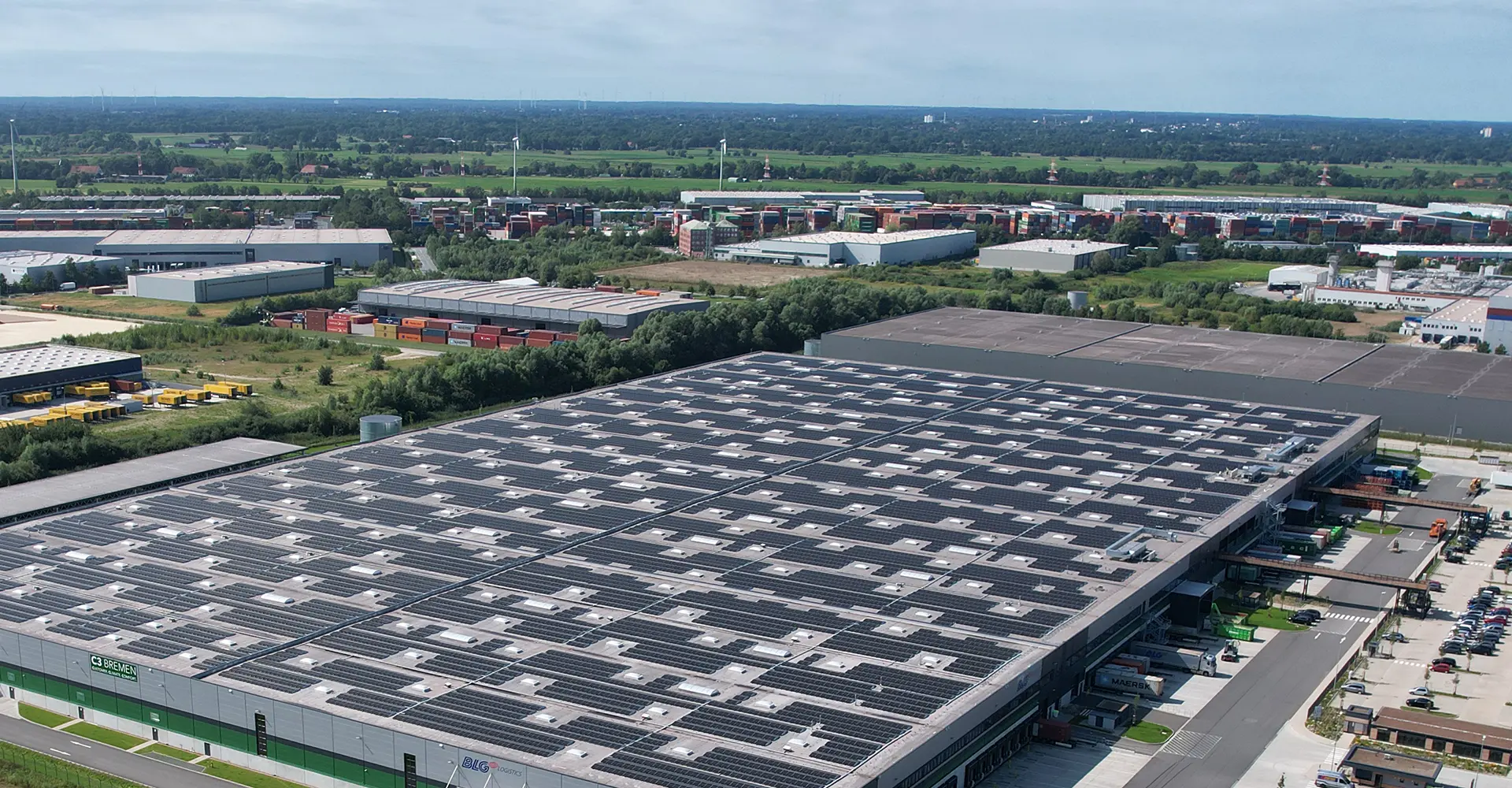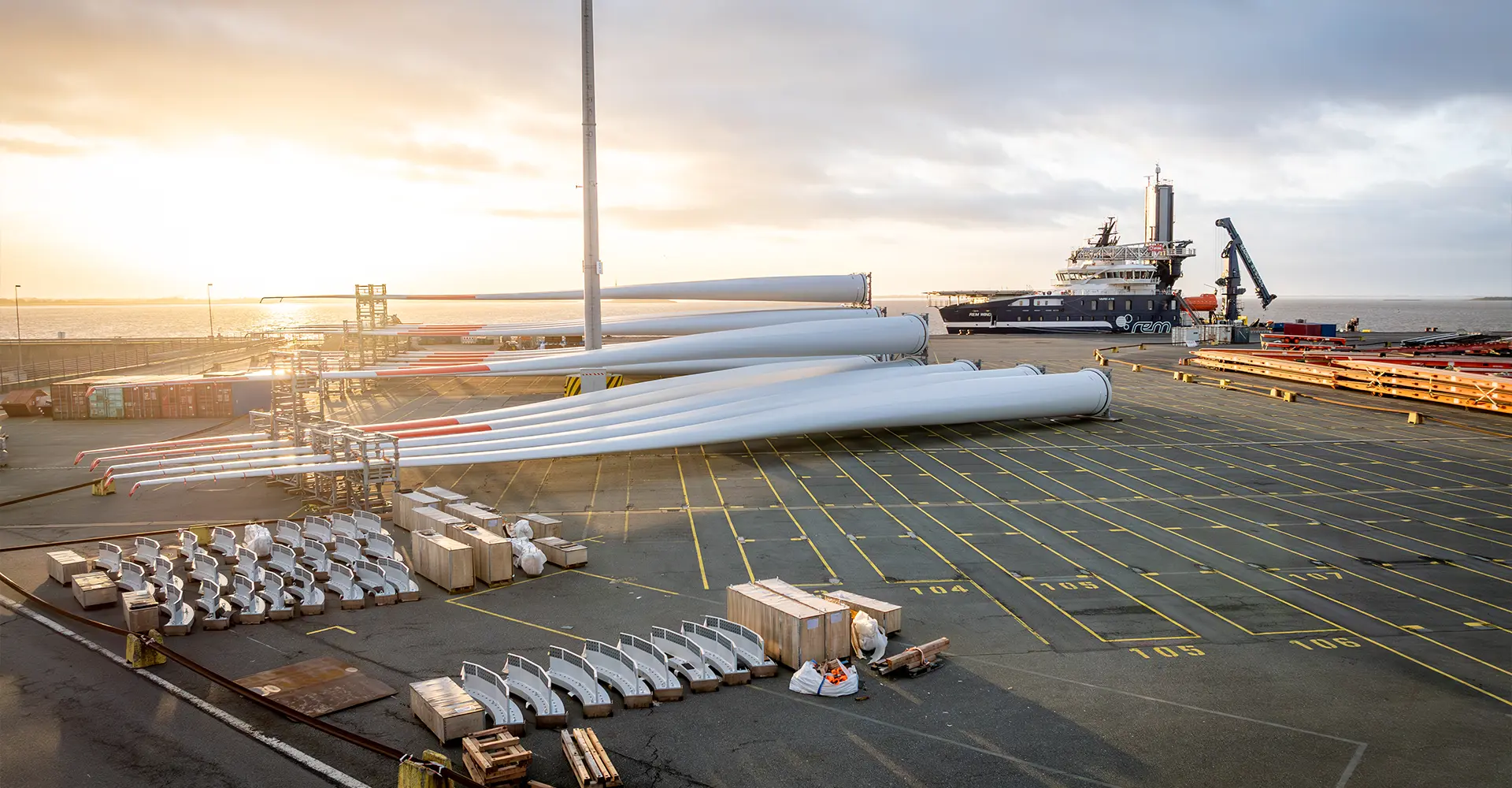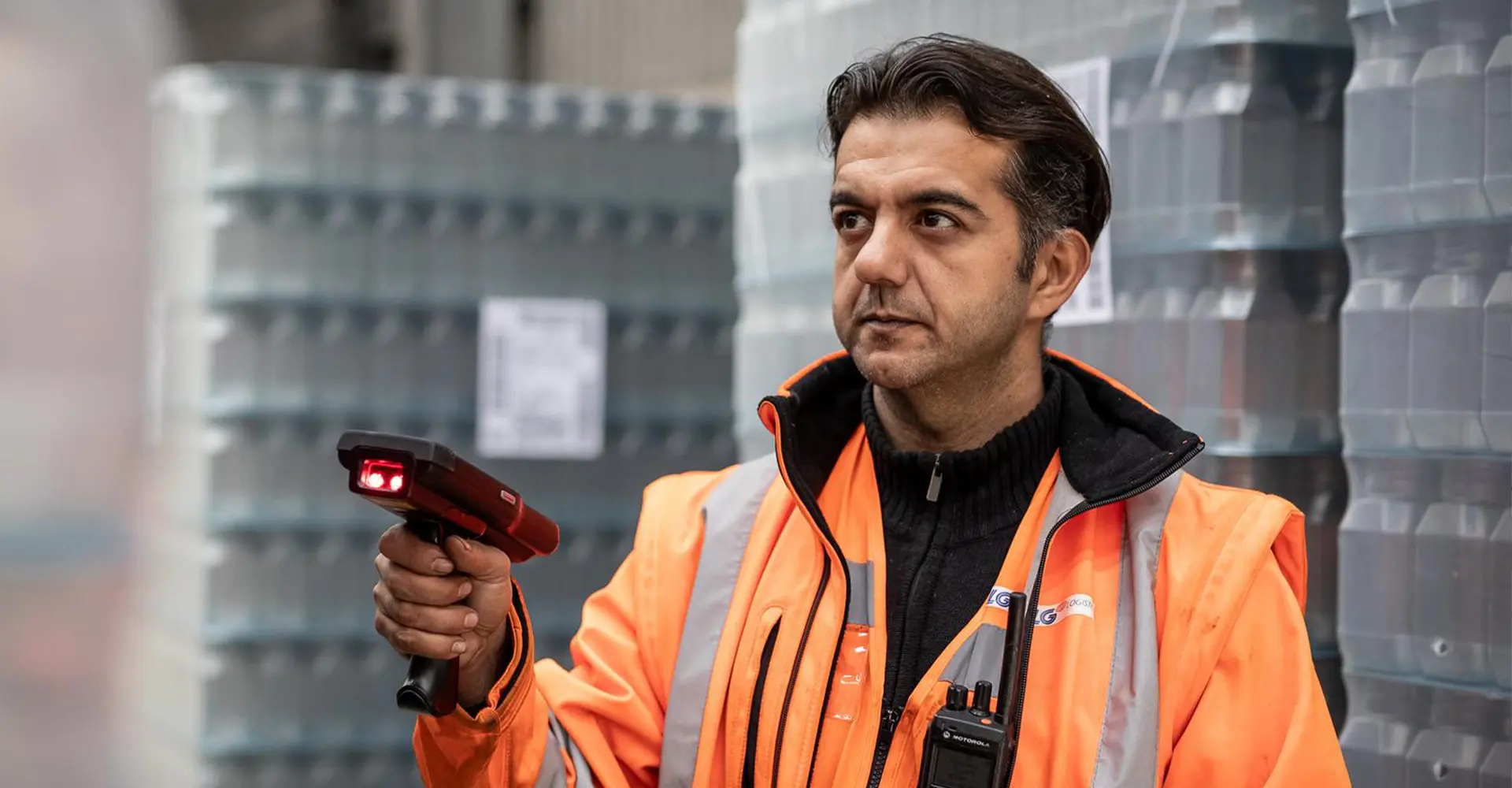BLG LOGISTICS takes climate action seriously, and aims to achieve net zero by 2030. Along the way, we will be relying on major reduction targets and levers such as generating our own energy and purchasing 100% green energy.
Approx.
40GWh
of energy
is required to power BLG LOGISTICS every year – starting in 2025, we will be using exclusively green energy.
31%
of carbon emissions
within BLG LOGISTICS are generated by the energy we use, making this a key lever on our path to decarbonization.
BLG LOGISTICS is tightening up its environmental target in line with the Paris Agreement’s 1.5°C goal. We have now increased our target from a 30% to a 50.4% reduction in Scope 1 and Scope 2 CO2 emissions by 2030 compared to the benchmark year of 2018. A key lever here will be relying exclusively on green energy from 2025 onward. BLG LOGISTICS will achieve this by combining our own and purchased green energy with individual Power Purchase Agreements (PPAs) from green energy sources.
What are Power Purchase Agreements (PPA)?
Power Purchase Agreements ensure BLG LOGISTICS a supply of green energy from renewable sources, and are often long-term arrangements. They include “on-site” PPAs, such as the third-party solar power systems installed on building roofs at BLG sites. BLG LOGISTICS also gets green energy from a new wind park near the Baltic Sea via an off-site PPA.
As a result, BLG LOGISTICS ensures it has a supply of green energy – whether from wind power plants or the solar panels on the roofs of BLG buildings – and helps to accelerate the expansion of renewable energies. At the same time, BLG LOGISTICS is optimizing energy efficiency at its own sites. By installing LED technology with smart light control, for example, we have managed to cut the amount of energy required for lighting at our locations by around 79%. We will continue to activate our levers energetically between now and 2030, and to work on targeted decarbonization initiatives. By sticking to this path, BLG LOGISTICS can make sustainable logistics a reality.

Logistics has a key role to play in climate action. With the right strategy, we can make major waves in the use of green energy, while at the same time reducing our vulnerability to fluctuations on the energy market.







